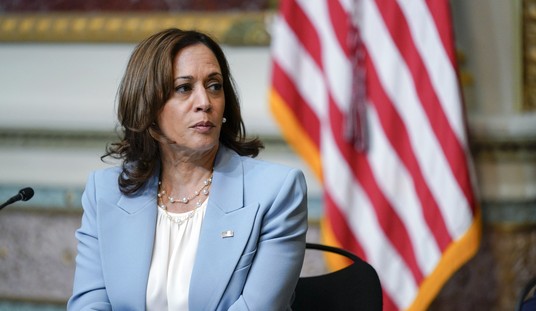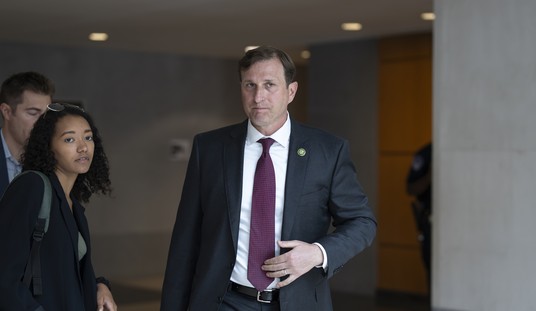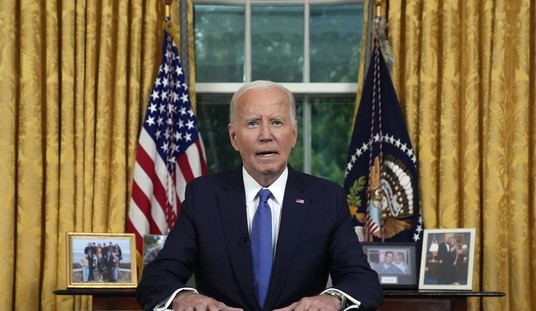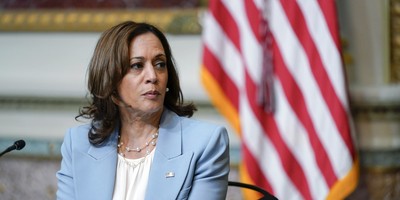A study released Tuesday morning concludes that the true cost of wind energy is 48 percent high than previous studies have estimated.
The study titled, "The True Cost of Energy; Wind,” was conducted by the Institute of Political Economy at Utah State University, and given to Townhall exclusively. They came to this conclusion by looking at implicit costs that a variety of other studies -- including studies from the Department of Energy and the Institute for Energy Research -- did not account for.
"Implicit costs are tough to measure," Dr. Ryan Yonk, co-author of the study and research director in the Department of Economics at Utah State University, told Townhall, saying that he hoped that future studies would look more into implicit costs.
The report highlights four main implicit costs associated with wind energy: the federal Production Tax Credit (PTC), Renewable Portfolio Standards (RPS), transmission infrastructure problems, and baseload cycling.
Advocates of wind energy point to the fact that 43 percent of all new electricity capacity stems from wind power. However, as the study points out, this is entirely due to the massive amounts of subsidies that wind power receives. Every year, wind subsidies increase by an average of 32 percent, with subsidies totaling almost $5 billion in 2010. Most of the subsidies stem from the PTC, which was first passed in 1992 to subsidize wind farms at a rate of $15 per megawatt-hour, which was eventually raised to $23 per megawatt-hour in 2013. Whenever the PTC is about to expire, wind farm installations dramatically decrease, as high 92 percent in 2013.
The PTC is one of the 82 wind energy initiatives that is overseen by nine federal agencies. Out of these initiatives, the PTC is the largest, accounting for 39 percent of revenue losses that the Treasury Department spent on wind-related initiatives.
"We don’t know what the market would like without the subsidies," Dr. Yonk said.
Recommended
And yet, despite the PTC, wind makes up only 4 percent of national energy consumption. As the authors of the study say, this is the true cost of the subsidies (emphasis mine):
By paying for the PTC with their taxes, American citizens subsidize private investments in wind energy development. Wind and solar energy both receive 20 times more federal subsidies than coal or natural gas in terms of average electricity generation. Since it was expanded in 2009, the PTC has cost an average of $5 billion per year. Recent IRS changes expanded the number of wind producers and the conditions for eligibility so that a one-year extension is expected to cost taxpayers approximately $13 billion over the next decade.24 These considerations increase the true cost of electricity produced from wind power. While the costs of subsidizing wind power are dispersed across all Americans, the benefits are enjoyed by a select few wind industry favorites.
Without the PTC, many private investors would have no incentive to invest in wind energy because such investments would no longer be profitable. Warren Buffett, who has invested billions in renewable energy, stated, "[W]e get a tax credit if we build a lot of wind farms. That’s the only reason to build them. They don’t make sense without the tax credit.” Thus, when the PTC is allowed to expire, investments in wind energy plummet.
This leads to a phenomenon known as negative pricing, where the seller pays the buyer to accept their product. Wind farms need to pay utilities to take electricity since wind is at its most powerful in the evenings, when most people are not using energy. This negative pricing distorts the market:
The PTC pays wind producers $23 for every megawatt-hour of electricity produced, regardless of market factors like supply and demand. Wind producers can then pay utilities (up to $23 per megawatt-hour) to take their power while still making a profit or at least breaking even. Subsidies, and the negative pricing they cause, distort the market for electricity and flood it with subsidized wind power. In some cases, this drives more conventional producers of electricity, such as nuclear plants, out of the market.
And this creates opportunity costs, meaning that the resources spent on the wind energy sector could have been instead on resources that were of higher value to the market.
"The subsidies are costly and they distort the market and as legislators and policymakers make those decisions, they should know what the real costs look like of regulation and subsidies in the energy sector,” Dr. Yonk said.
The study also highlights RPS standards, which are mandates for states to meet quotas for renewable energy. Twenty-nine states, as well as Washington, D.C., and two territories, have RPS standards. Since renewable energy sources tend to be more expensive than conventional energy sources, the study concludes that states with RPS have energy prices that are 38% higher than states that don't have RPS.
Another implicit cost of wind energy are transmission infrastructure problems. Wind farms tend to be farther away from transmission farms, which means the grid needs to be expanded and therefore results in higher costs.
"In order to build wind farms you have to go where there’s enough wind capacity… and often those are not conveniently located," Dr. Yonk said, describing the transmission expansion costs as "quite substantial." The study cites a report saying the costs are high as $27 per megawatt-hour.
The final implicit cost that the study highlights is a process known as baseload cycling:
In areas with high levels of wind power, the grid relies on existing energy plants to provide electricity when the wind is not blowing. These generators ensure that the station is always supplying a minimum amount of energy, also known as “baseload” power. Even though the generators are not used when the wind turbines are supplying plenty of power, they must be kept on standby, ready to be fired up at a moment’s notice. The generators “cycle” between use and non-use, hence the term “baseload cycling.”
Baseload cycling increases operation and maintenance costs as two energy plants (the wind farm and the baseload generator) are kept running to do the job of one. Researchers at the National Renewable Energy Laboratory note that cycling increases emissions because firing up a plant multiple times in a single day uses more fuel than running at a steady rate throughout the day."
The study then cites a report saying that the extra cost of baseload cycling could be as high as $23 per megawatt-hour.
With the study's release, Dr. Yonk hopes that more research will conducted on the implicit costs of energy and hopes that legislators and policymakers will have that information going forward.
"This is a situation where policymakers are looking at what to do going forward… understanding the true cost of any source of energy and what goes into it is essential,” Dr. Yonk said.

























Join the conversation as a VIP Member